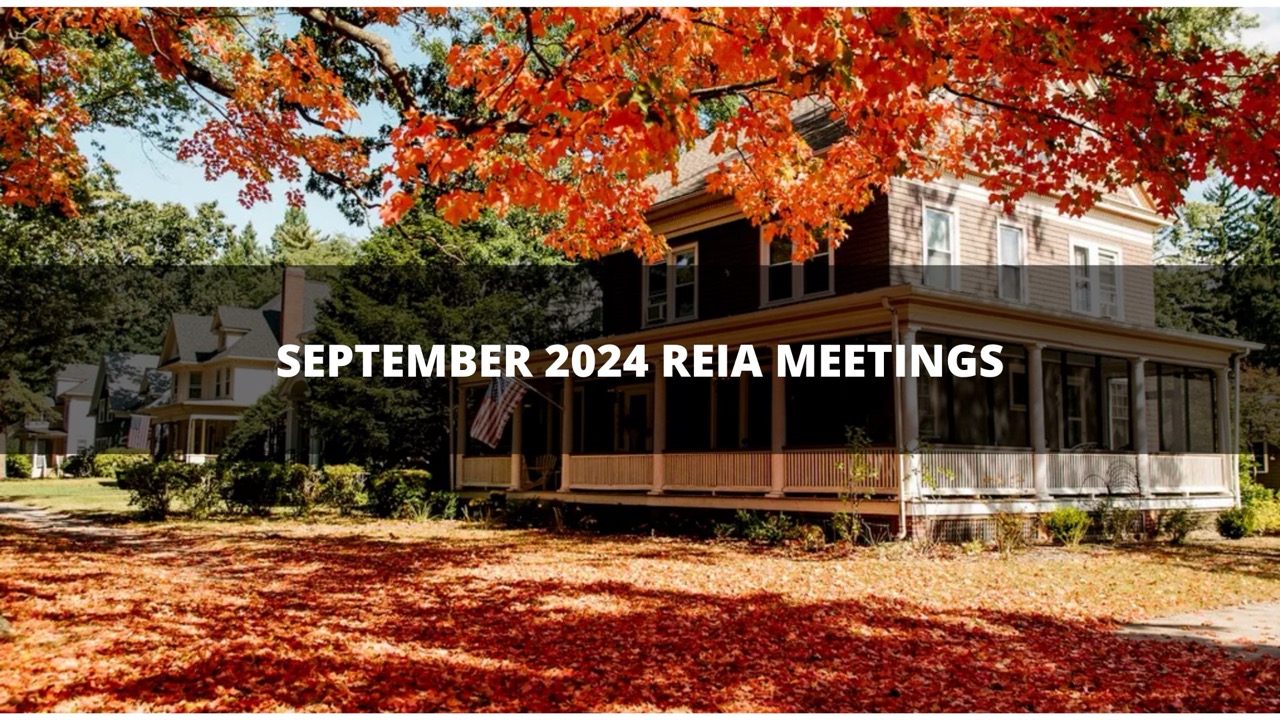The BEST Way to Find Motivated Sellers for Wholesalers and Flippers
Finding an investment deal is great, but finding a deal directly from motivated sellers gives you the added option of wholesaling the property (or flipping for greater returns) since you can get it for a cheaper price.
While marketing is going to have different results depending on lead types, your target area (city, zip code, neighborhood), and price point, postcards are an effective method you can employ.
Below, we’ll reveal some secrets, including:
- The most effective strategies for direct mail
- Who to target for your motivated seller list
- Resources for creating your motivated seller list
- Tips for online advertising and word-of-mouth
- How to work with the motivated sellers that contact you

Motivated Seller Marketing: Send It in a Letter
Direct mail marketing for any investment property, although it seems like an antiquated strategy, is still probably the most effective way to market for motivated seller leads.
Distressed sellers fall into many categories, since people who find themselves in a situation where they need to sell their house quickly are from all walks of life.
Some of these categories include divorcees, people who recently lost or changed jobs, out-of-state owners, absentee owners, expired MLS listings, owners behind on property taxes (tax liens), municipal code violators, heirs and probates, struggling landlords, owners under threat of foreclosure, poorly maintained or old properties, hoarders, fire-damaged properties, military transfers, and any owners in a financially difficult situation.
No matter the situation, direct mail remains the most tried and true method of contact. Think about it: Everybody checks their mail (for the most part), right?

Direct Mail: Yellow Letters and Postcards
Yellow letters are handwritten notes (or appear handwritten) on yellow legal pad style lined paper that aim to add a touch of personalization when mailed to prospective motivated sellers. They have proven to be an effective method for investors despite having certain disadvantages.
Yellow letters are best utilized if you’re “driving for dollars”, or if you have a specific market that you’re trying to target. They generally have a higher conversion rate or a higher return rate, but they also cost more. They can be as much as twice the cost of a postcard.
Postcards are better if you’re targeting larger areas, such as zip codes or entire neighborhoods (rather than specific properties). They don’t convert as well, but you can cover a much larger area than yellow letters. Since they are cheaper, you can also afford to follow up with prospects more often. Postcards often generate the greatest number of quality leads.
More Direct Mail Options . . .
You could also try typed letters of various lengths that appear more professional than yellow letters and may even include your company logo and a picture of the house. In certain cases, such as if the owner had a relative recently pass away, a professional letter would be more appropriate than a yellow letter.
Flyers are another option, and sometimes you can find other local services to partner with. Say you want to team up with another real estate service in your neighborhood, a lawn company, or even a pizza company or other local service—you can split the cost of printing and postage and cover a larger area.
An additional newer option that has grown quite popular among wholesalers is an app called DealMachine. This tool seamlessly mails a pre-written postcard, customized with a picture of the house that you snap from your smartphone. The app searches its database to find owner contact info (address, email, phone) without you having to dig through city records. If you plan on “driving for dollars,” this could be a great option, but with an added cost.

Who to Target: Create a Stellar List of Sellers
Your list is the single most important consideration when it comes to direct mail. The accuracy of your list can mean the difference between success and failure. It’s the lifeline of your business. Especially, if you’re a wholesaler. As a wholesaler, the bulk of your time and effort goes into marketing, and that’s why investors are willing to pay a fee.
Find Absentee Owners
One of the biggest and most successful lists you can pull from is absentee owners . . . but it’s also your most saturated. Despite the competition, you can’t ignore it because it’s tried and true.
Absentee owners are a good group to hit because they aren’t living in the house. They might be tired landlords or they might be distressed owners who had to move out due to a divorce, a job, or other reason.

They might have been foreclosed on, especially HUD foreclosures. Or maybe they just inherited the house. Most are constantly searching ‘how to sell my house’ on Google.
Absentee is usually your bread and butter, but at the same time, keep in mind that it’s saturated because everybody goes for absentee owners. They might get 10, 15, 50 postcards in the mail—what makes yours stick out? Sometimes it’s just the luck of the draw.
To obtain a list of absentee owners, go to your local county tax office and ask for “a list of properties where the owner’s address and the property address are different.” You may also be able to find your county’s public records online, but the list may be difficult to navigate. We’ll discuss in more detail several ways to obtain this list and other types of motivated seller lists below under “Resources for Creating Your List.”
Who Has High Home Equity?
I was on BiggerPockets when I heard the owner of YellowLetters.com say something interesting . . .
His podcast was brilliant, and he essentially said that even before you consider absentee owners, you should consider houses with high equity. You want somebody who owns a large percentage of the property.
Ideally, you want to find a list where the person has owned the property for 10, 15, or 20 years. The longer they’ve owned it, the better because that means they have more equity in the house, which might also mean several other things . . .
They probably haven’t been taking care of the house as much, especially if they are an absentee owner. There is often a lot of deferred maintenance for a house people have owned for a long time.
They could be renting it out, so the house might not be in as great of shape as it used to be.
On top of that, since they own a larger portion of the house, you can usually negotiate with them more easily. Someone who has only owned the house for a couple of years can’t afford to lose money. They are less likely to negotiate than someone who has their house paid off, or has enough equity to walk away with some cash.
For example, let’s say you find someone with a $100,000 house. If they’ve lived in the house for two to five years, they probably still owe $80,000 or $90,000 on the house. You don’t want to buy that house for $80,000 or $90,000. You want to buy it at $50,000 or $60,000, but they can’t go any lower because they owe $80,000 on the house.
If you obtain a list of homeowners from the county or a list broker, check whether it includes purchase dates.

Property Size Does Matter
Depending on your market, the bread and butter of single-family real estate is usually three bedrooms/two baths. If you’re looking at lower income, then two bedrooms are okay.
If you focus on the bread and butter houses in your target neighborhood or zip code, you’ll have a much easier time finding buyers. You don’t necessarily want the biggest, most beautiful house in the neighborhood (or the smallest and cheapest either).
Pay Attention to that Five-Digit Number (Zip Codes!)
When you’re looking for zip codes, be cognizant of where those zip codes are. It sounds silly but some people choose zip codes randomly only to find out they blasted out to one of the richest neighborhoods in town.
It’s not likely that you’ll find distressed properties in rich neighborhoods. You’re going to get few calls back from that versus a more blue-collar neighborhood or a lower income neighborhood that has a higher probability for distressed owners.
Think about what your target market is—what is it that you, personally, are going after?
Just pick where you want to go, and be cognizant of where you’re sending. Sometimes you might want to mix it up and send to both higher and lower end areas.
Resources for Creating Your List
At the beginning of this article, we mentioned a long list of categories for motivated sellers. Many of these homeowners can be found by contacting the county or by using an online paid service, while others you’ll need to get more creative.
County Records
Specifically, you can ask your county assessor’s office for tax delinquent lists, pre-foreclosure lists, eviction lists, and probate lists. You can sometimes find the information online but it may be worth visiting them in person. For more information about your local government’s public information, check out www.netronline.com.
Some counties are more helpful than others and it’s of utmost importance that the lists are as up-to-date, so make sure they are exporting the data in real-time. These lists might cost between $100–$500.
List Brokers and Other Paid Services
Depending on your budget, you can also use list brokers, real estate data services, or other paid tools like ListSource, AgentPro247, Realeflow, Melissadata, Click2Mail, DataTree, ProspectNow, or DealMachine. These tools will make the data easier to find, easier to understand, easier to sort through, and will allow you to get extra information.
You’ll just need to weigh the extra costs of these services against the benefits. Keep in mind that you want to keep your cost per direct mailed item and cost per lead as low as possible.
Driving for Dollars
If you’re looking for the lowest cost strategy, that may be “driving for dollars.” You’ll physically visit specific neighborhoods searching for houses that appear vacant, in need of work, are often inherited, and may be behind on taxes. Make sure to take plenty of pictures and, if possible, ask the neighbors about the property situation.
Then, check at the local town hall’s clerk office for the address of the owner on record. For more tips on driving for dollars, check out these Tips from 5 Investing Experts.
Creative List Building
Some motivated sellers won’t be on any list that you can purchase online or from the county. In these cases, you’ll have to get more creative. Below are a few examples.
When searching for divorcees that need to sell their home, you could try contacting local divorce attorneys who’d like to help their clients get out from under the house as soon as possible. Military transfers can be found by searching near military bases for absentee owners. Expired MLS listings can be found with the help of a real estate agent. Probate records can be accessed by visiting the local probate court office. Pre-foreclosures can be found by contacting title companies and asking for a pre-foreclosure list.
You’ll have to test whether it’s worth your time to seek out these resources in order to add to your lists obtained from the county, online tools, and driving for dollars. Below we’ll discuss the importance of filtering these lists to keep postal costs under control.
Filter, Sort, and Test
As you grow your list, make sure to carefully sort and filter according to your target homeowner demographics. Above we mentioned things like equity, year of purchase, property size (beds/baths), and zip code. You’ll also want to look at year built, late payments, notices of default, owner-occupied, property types, and any other key demographics you’ve identified and then remove any duplicates.
Once you’ve created your perfect list, test a portion (send a batch of 200 postcards before sending 1,000+) to get an initial response rate. If you receive no responses from truly motivated sellers, then you’ll likely need to make some adjustments. If you do receive a decent response rate, then you can let it rip and build out a system that will work for you in the long-term.
Find Motivated Seller Deals on MyHouseDeals
On MyHouseDeals, we have three main categories of deal leads: wholesale, foreclosures, and motivated sellers. To search for motivated seller leads, go to our property search page and select your city of choice. Then in the search options, uncheck wholesale and foreclosures, and leave motivated sellers checked. You will then receive a listing of motivated seller deals in your area.

Advertising to Sellers Online: the Good, the Bad, and the Ugly
Advertising online is expensive . . .
Direct mail is tough. You get a hundred calls, ten of them are legit, and out of the ten, you get one that you end up wholesaling.
That’s a lot of time spent but, but most people who do online advertising, like Google Ads, are bigger wholesaling companies. These guys have large campaigns, and more funds for campaigns. So online competition is fierce.
Your regular Joe can probably do it too, but just expect that it’s going to be more expensive. If that’s what you excel at, and you find success with Google Ads or with generating organic traffic, then by all means do it.
Word-of-Mouth: Shout It from the Rooftops
A great way for a wholesaler to market is just by word-of-mouth.
You tell people, “Hey. I’m a real estate investor.”
You tell all of your friends. You let everybody know this is what you do. Someone will come out of the woodwork and say, “Hey, my friend’s brother just passed away and he inherited a house that he doesn’t want . . .”
It’s like direct mail but you’re advertising wherever you go if you’re okay with doing that.
Nurture That Relationship with the Seller
The most important thing in all of this is providing customer service. Once you get a lead, don’t let it go to waste.

Sometimes some sellers will get 50 postcards from investors, and they’ll just go down the list and start calling. Whoever responds well, communicates well, and frankly, whoever they like will get the deal.
Be prompt. Answer your phone. Set up the appointment. Go to the appointment. Be prompt and proactive or someone else will get the deal.
You cannot make somebody sell a property, but the moment somebody wants to sell, you cannot stop them from going to the first person that shows up for them and works well with them.
That’s why, as a wholesaler, you have to be good about customer service. And remember, your main active role as a wholesaler might be conflict resolution.
How do you help the seller sell their property, and how do you help the buyer find an investment property they like?
Whether you are wholesaling or flipping, you need to build skills for relating to distressed owners. For more advice on how to talk with motivated sellers, check out this article: How to Talk to Motivated Sellers: 11 Surefire Tips for Success
And the BEST Way to Find Motivated Sellers is . . .
Ultimately, the best marketing strategy is going to be some combination of the tactics we’ve mentioned above, according to what works best for your personal situation. The strategy that will work is the one you fully commit yourself to and do consistently. That’s really what it boils down to.
If you’re doing online marketing and have found some success with Google Ads or SEO, then keep on doing online marketing and get better and better at it.
If you’re doing direct mail, keep doing it over and over until you start seeing results. Is it going to be from that first batch that you sent out, or is it going to be the fifth batch, or the seventh batch? Just make sure you continue testing and improving.
Direct mail takes time. That’s why you just keep it up, and eventually, you’ll figure out what works for you and get better at it. Perfect your seller list, perfect your postcard/letter format, and perfect your overall strategy.
Take the time to learn what works for other investors. Real estate seminars and networking events offer great opportunities to find out what works for others in your area. Here’s another list that could help: List of Local REIA Meetings.
To gain an even deeper understanding of how to find motivated sellers, a MyHouseDeals membership connects you to a thriving community of more than 100,000 investors strong and all of the services, tools, and resources you need to grow your wholesaling or fix and flip business. Roughly a third of our members consider fix and flips their primary investment strategy. That figure stands at 20% for wholesaling. A Premium membership offers countless benefits to both fix and flippers and wholesalers. Beyond access to deals 14 days before regular members and unlimited access to all properties, you’ll also enjoy access to our exclusive list of cash buyers, your own lead generation website, wealth-building training courses on demand, and much, much more.






